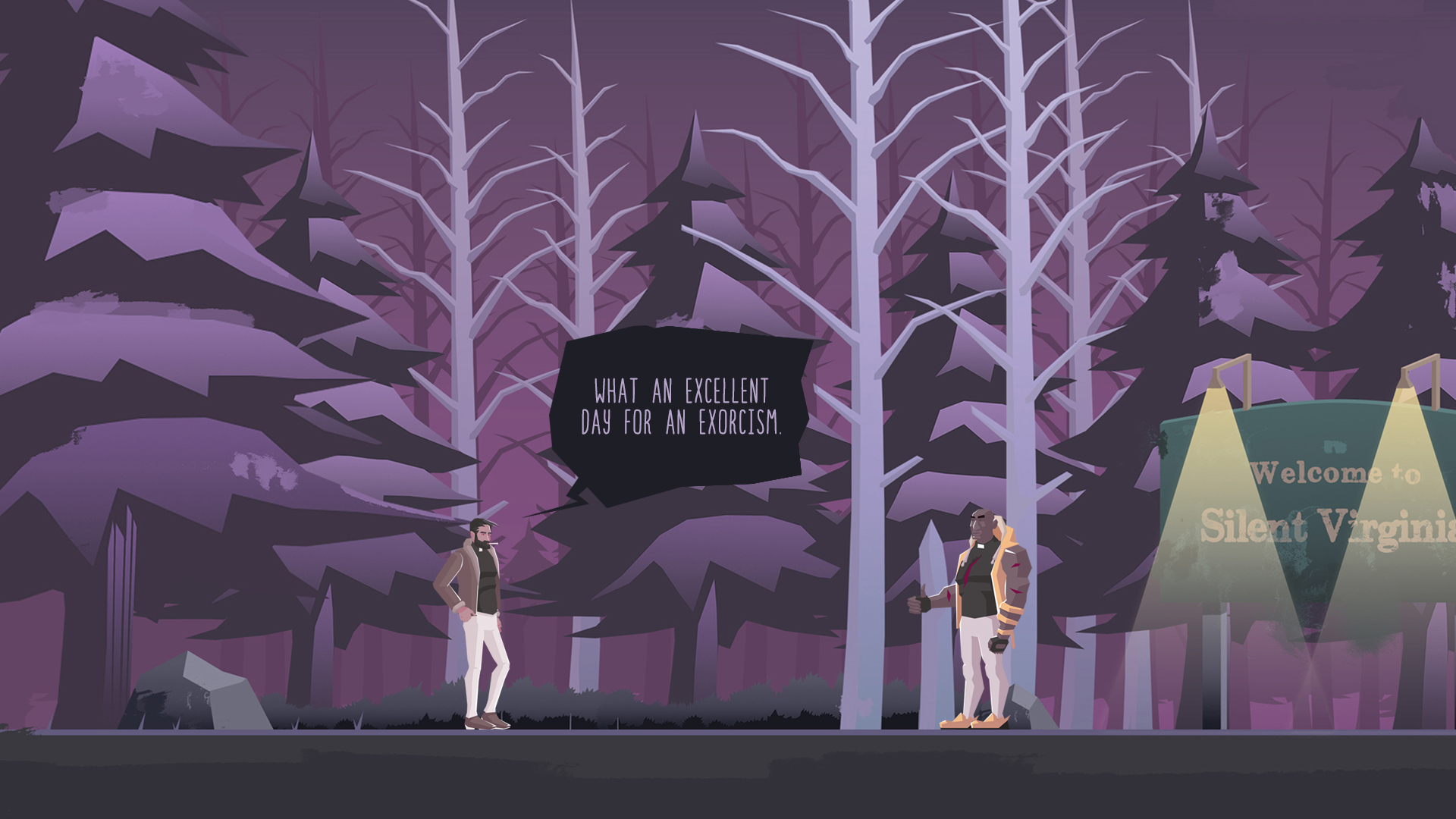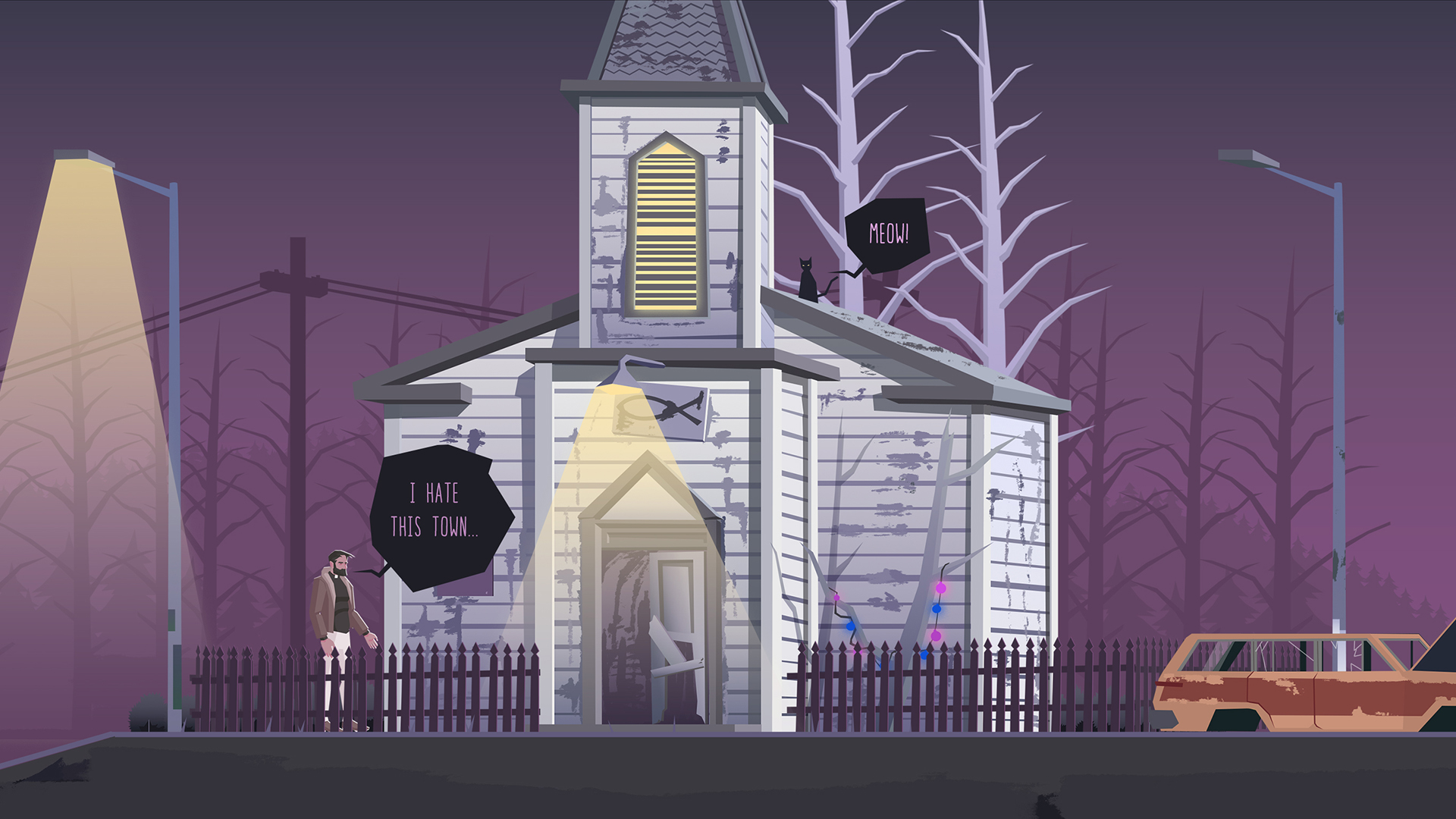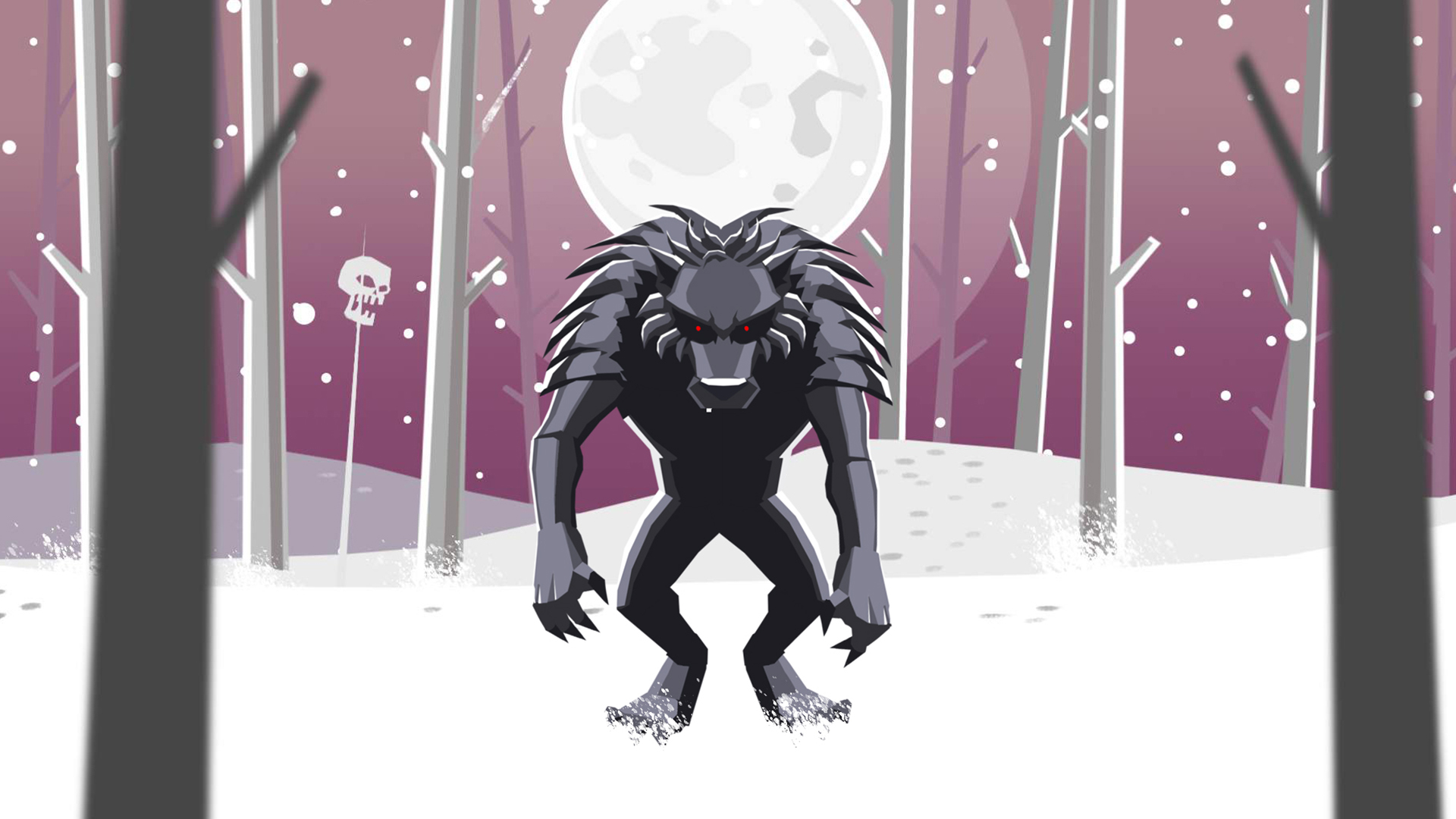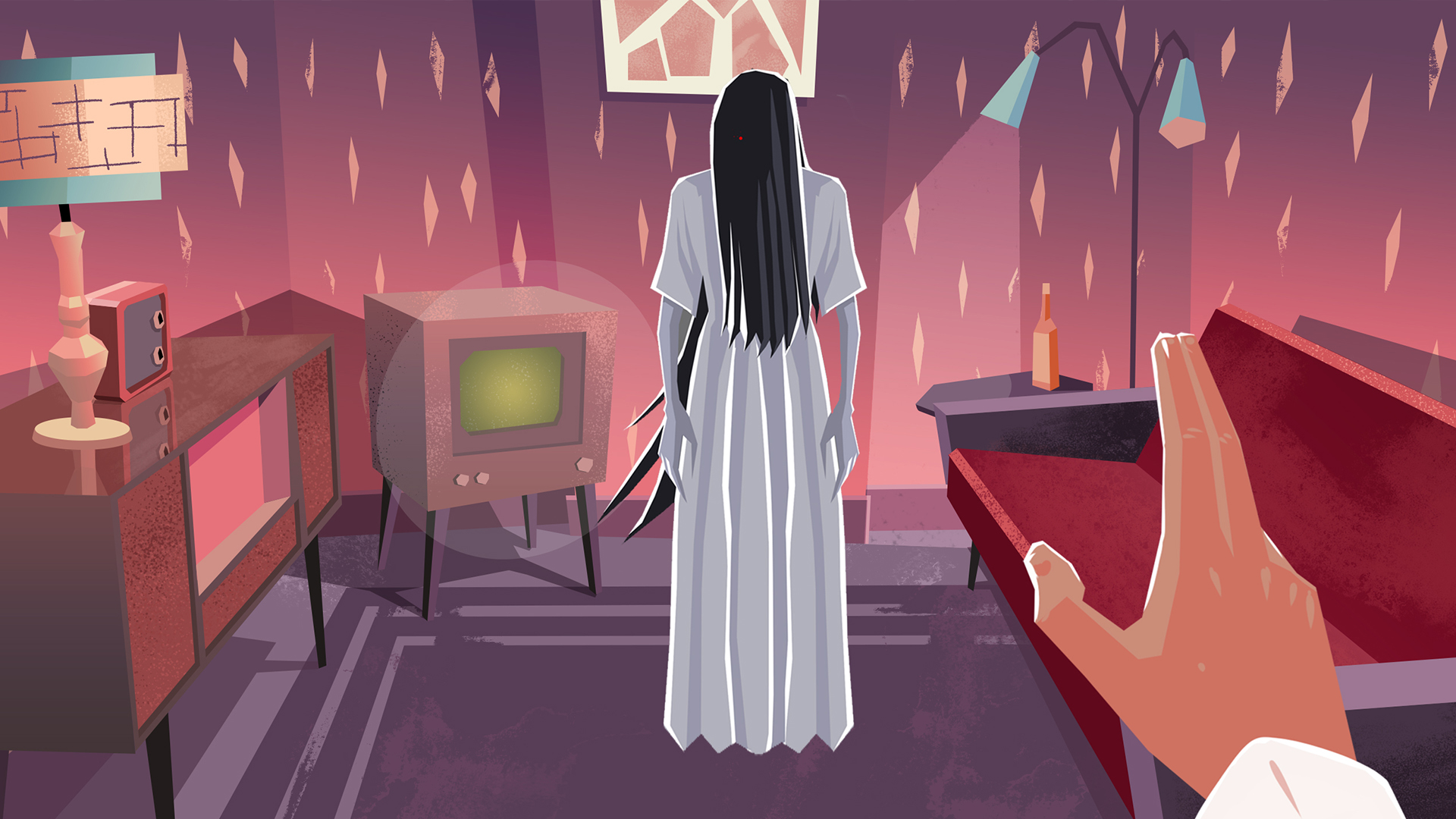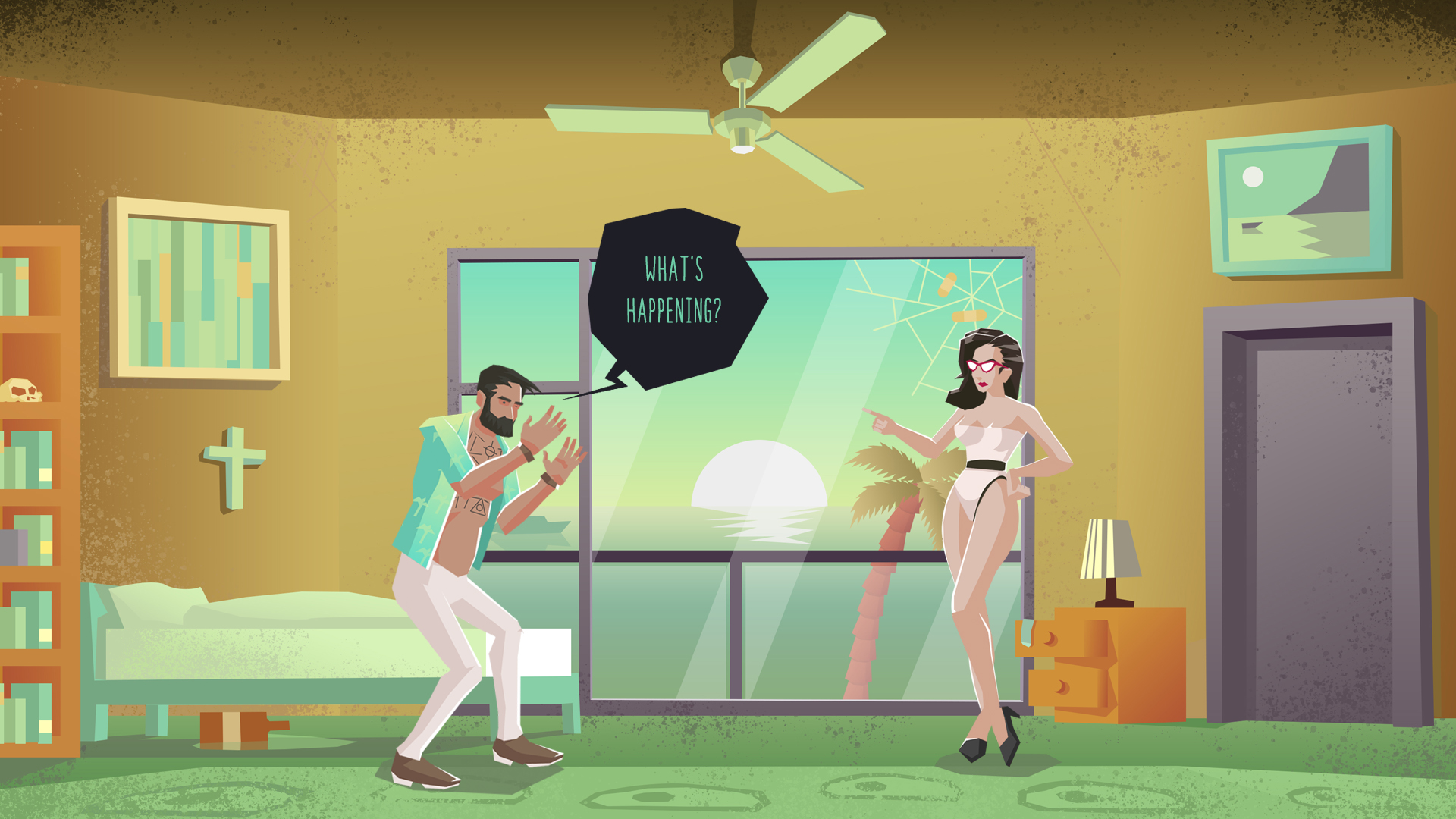ABOUT GAME
the Unholy Society is a game inspired by 80s and 90s action movies as well as comic book series such as Preacher and Constantine. It presents a world captured by the united forces of demons and monsters. The Werewolf King, the Great Old One, Satan, the Great Voodoo Shaman and Dracula join forces to eradicate love and bring eternal darkness to the world, and perhaps to also drink lots of tea and discuss art. The only one with a chance of stopping them is our amnesiac exorcist. At the request of the Pope himself he sets off on the quest to fight for good and justice, leaving behind a trail of cigarette butts and empty whiskey bottles.STORY
A retired exorcist is forced to don his cassock one last time to save the world. Lying on a bed in a dingy hotel, the exorcist was unaware that his one night stand beauty would become a threat… Just after midnight she revealed her demonic face and perfectly sharp, though very unwomanly, claws. As it turned out later, this case wasn’t the last. A sect of the most powerful and the most iconic bad guys of pop culture threatens the world. Only our hero can stop them with the help of his lackluster faith. Will his dusty Bible, revolver and a wooden stake be enough? Will the exorcist recover his lost memories and regain his abilities?
Were super happy to announce:
After a lot of work and a fair share of hardships, The Unholy Society finally has its official release date for Steam!
Ladies, gentlemen, and everybody in between - mark February 25, 2020 on your calendars!
Are you ready to meet Bon and Susan? Exorcise some nasty demons? Or maybe high five the pope?
Get ready for the release day and wishlist it on Steam today!
PS. Make sure to check out our top secret you-didn't-hear-it-from-me launch sale...
Happy Halloween!
Since Bon is very fond of this special day, he's got a huge announcement to make:
We're opening beta tests for The Unholy Society!
If you'd like to help us improve and polish the game, fill out the application form today!
https://forms.gle/3sdkrsGrF4fYpCvc9
We need you as a beta tester!

The Unholy Societys not dead!
Anyone who knows bare minimum about video games probably realizes this: development of a game is no easy task.
Luckily, despite multiple hardships, our team is dead set on working further and releasing the fruits of our labor in the nearest predictable future. Make sure to get all of your devotional artifacts ready because youre in for the craziest bible study ever.
We can proudly say that were at the end stages of the development process. In the meantime, we have polished already existing graphics, stepped up our comedy game in the dialogues, and tweaked the pacing a little bit. Most of our time, though, was spent on preparing the brand new exorcism system; weve taken into consideration all the feedback we got in the last months, and so far we are incredibly pleased with the result.
We hope to share it with everyone as soon as possible!
tl;dr - stay tuned and we will bring you:
- witty dialogues,
- engaging gameplay,
- unique artstyle,
- s a r c a s m,
- pop culture references that will make you cry from laughter,
- sex, drugs, and Jesus Christ,
- absolutely no chill.
If you approve of our dedication towards Our Lord and Saviour, please add The Unholy Society to your wishlist today!
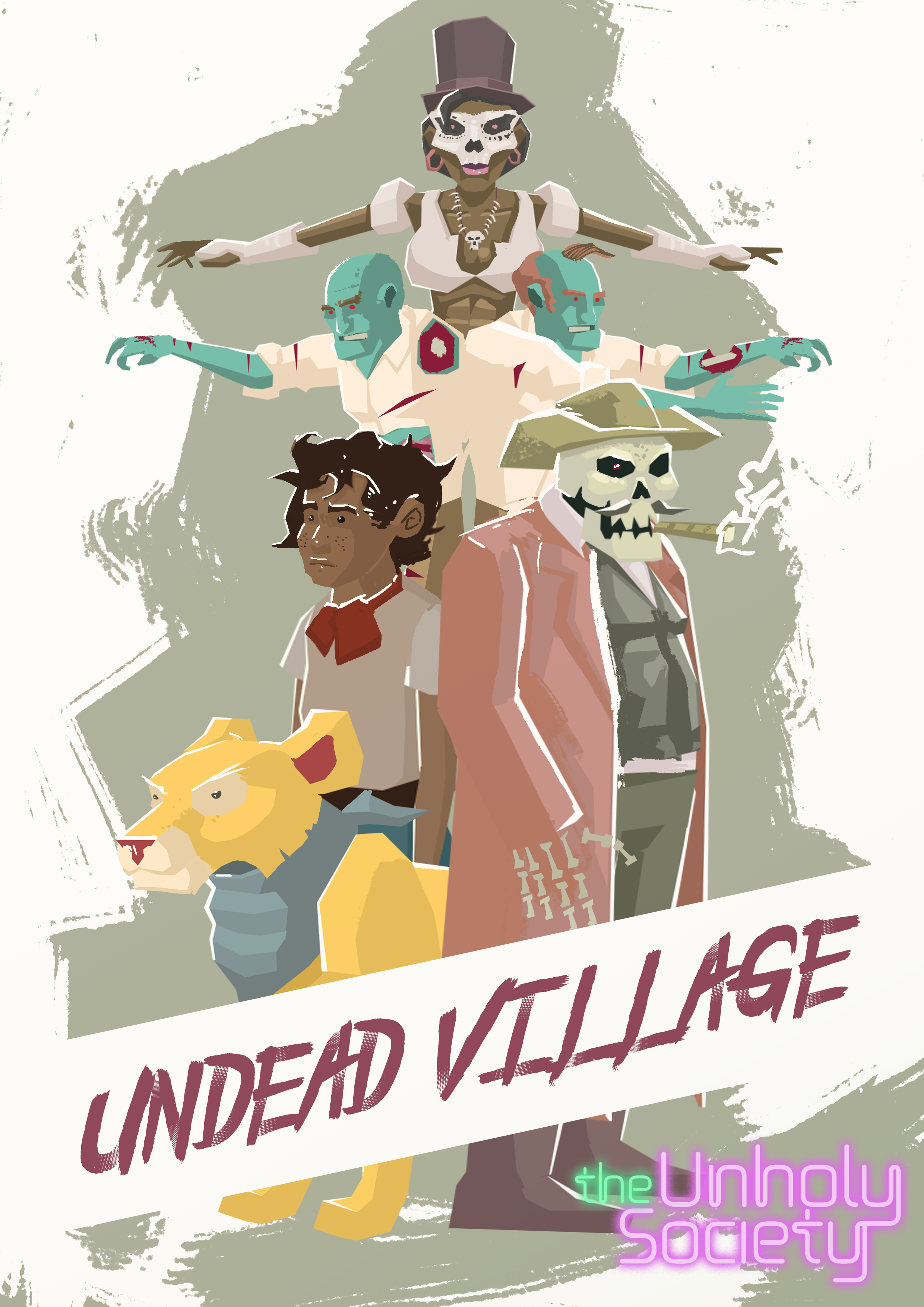
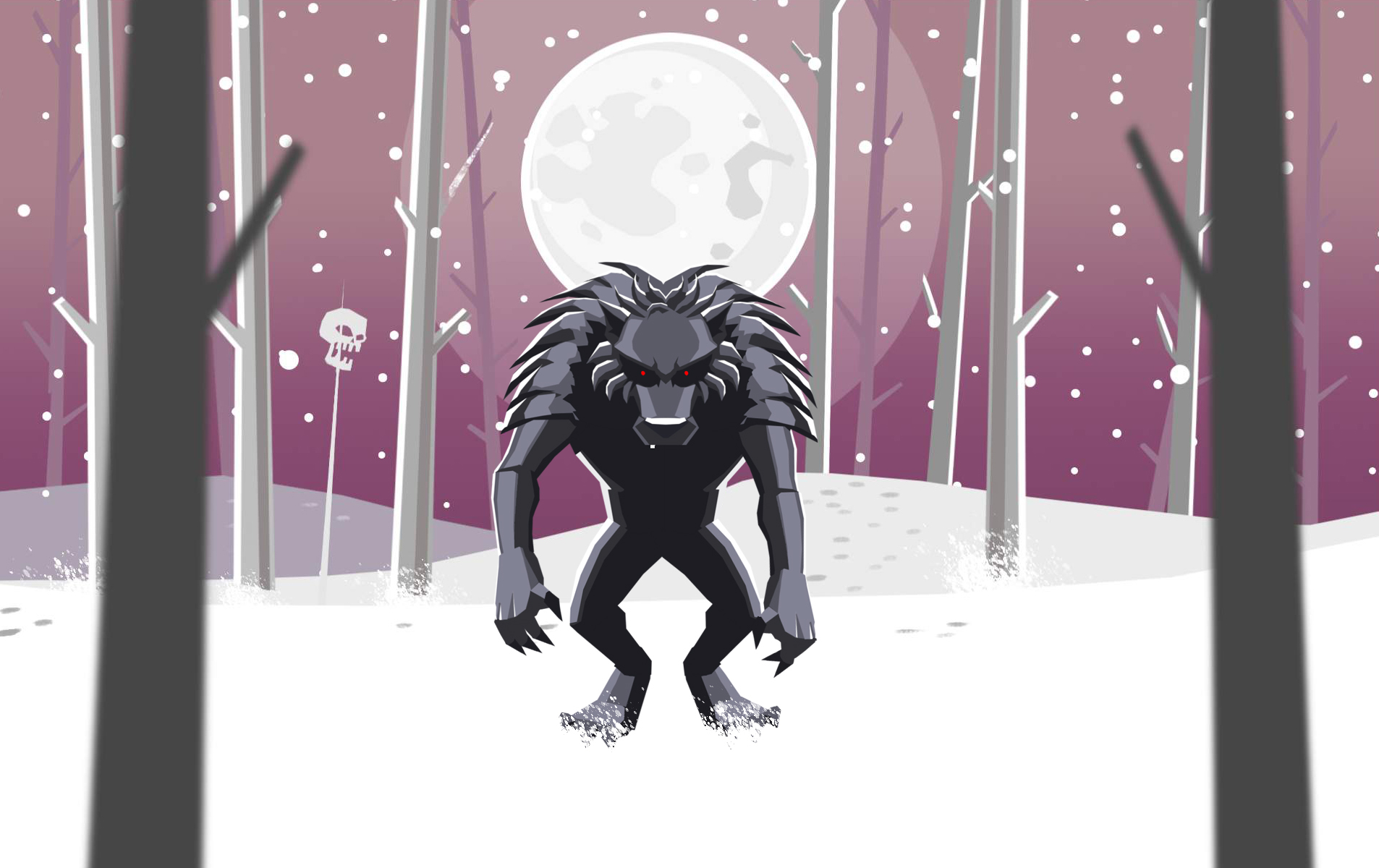
We love comics, and we wanted all the conversations in the game to look like drawn straight from the visual novels. Comic books have by now developed a substantial “standard language” how to convey some ideas.
Bubbles of all shapes and sizes
For example, there are clearly defined ways how to differentiate between someone speaking and whispering, or just speaking with a weak voice and the narrator bubbles often have a distinct background.
We also knew that we will have some… “special guests” speaking. This is the game where you can speak with The Devil himself, and his comic bubble should not look like a mere mortal. For this, we looked at how Neil Gaiman’s The Sandman uses various comic bubble types to represent various special characters (like “the endless”). E.g. the Dream has a special bubble that is filled with black, has a strong white outline and is wobbly. You automatically imagine that it’s not a normal voice speaking these words.
So, we wanted it all in our game :) To achieve this, we developed a simple system of defining comic bubble types. We have many comic bubble types, and each type may have different shape, outline, colors and font. Each NPC can have his/her special bubble type, also a particular phrase (like shout) may use a particular comic bubble type.
Here’s how hero shouting may look like:
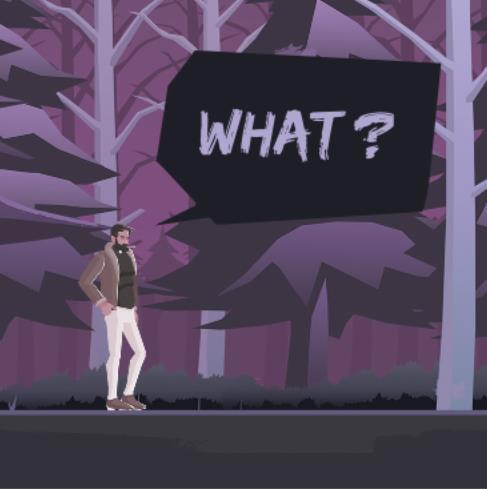
The simplest, early comic bubble type looked like this when designed in Blender:
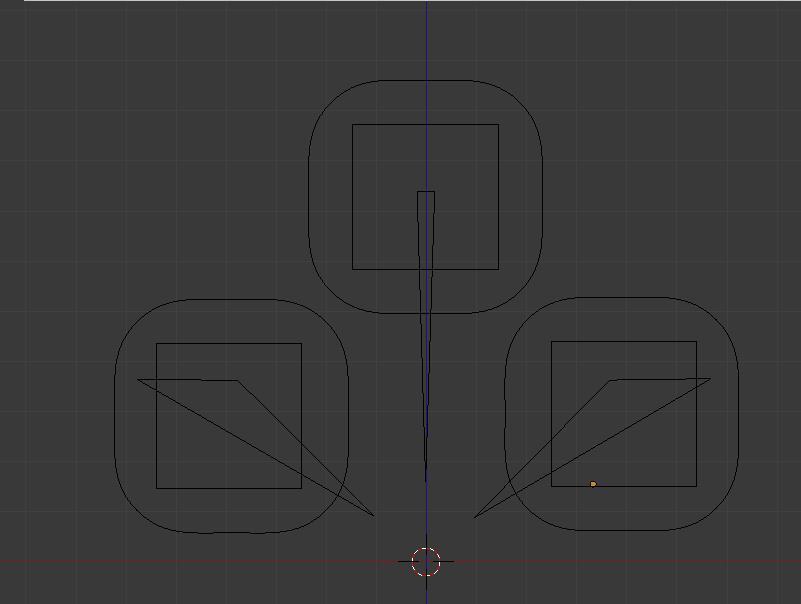
As you can see, a bubble type has actually three bubble shapes: one to the left, one to the right, and one going to the top. We use a particular direction in game depending on various things. In the “walking view” the direction (usually) depends on the direction between a speaker and a listener. In the “first-person view” (when we fight) the direction depends on the position of speaker’s mouth on the screen.
Oh yeah, each NPC has a specifically configured “mouth” position.
Inside the bubble, we have a special area where the text must fit. We first put the text inside, wrap it, and then we adjust bubble scaling to make the best fit around the text.
The screenshot above shows a comic bubble for “choice”, used when a player needs to make a choice in the conversation. The three bubbles never overlap each other, this way choices are displayed correctly. This is how it looks like in game:
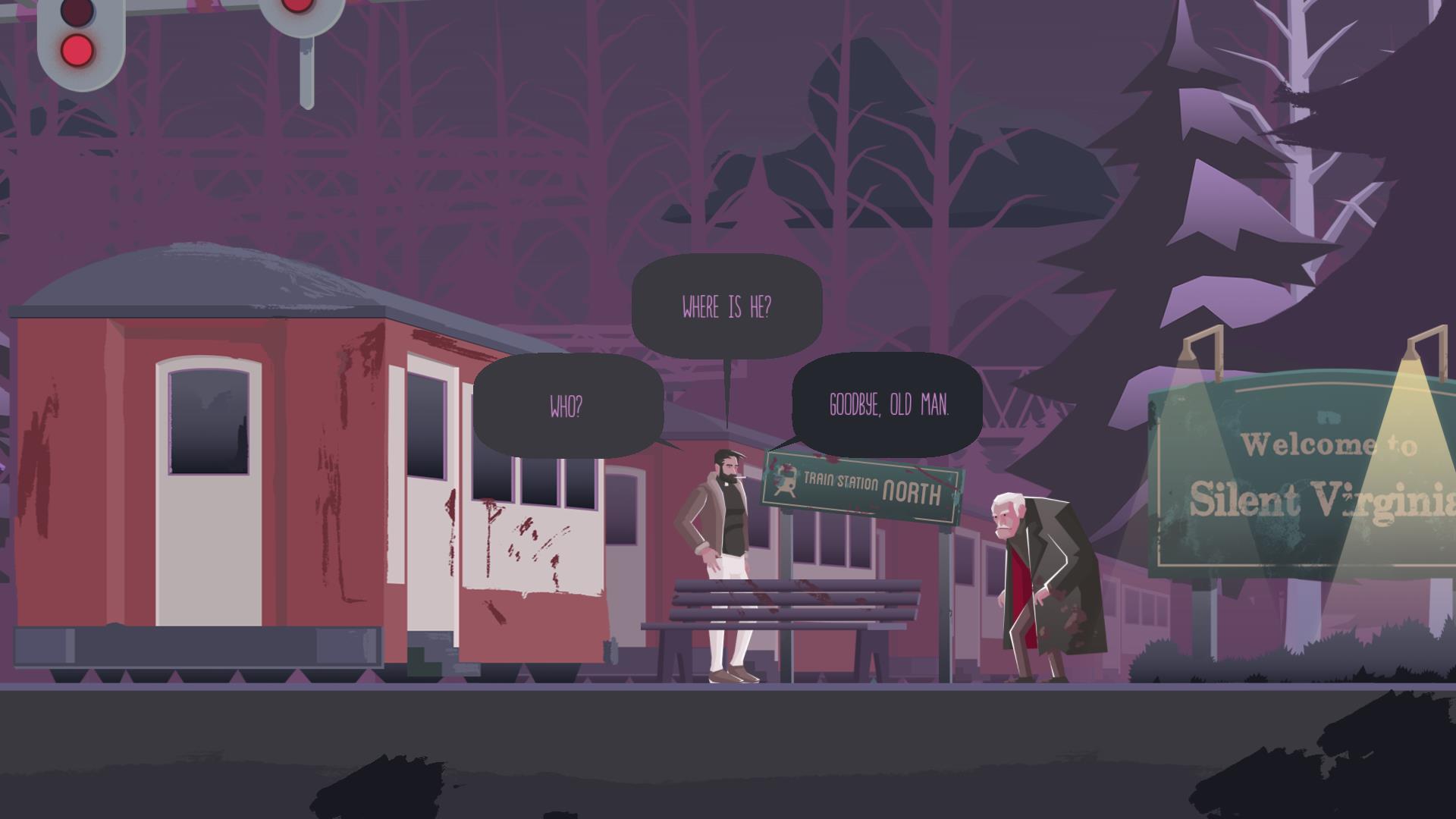
When a person speaks, we use a different bubble shape:

Will it blend?
We use Blender’s Bezier curves to define comic bubble shape. And we make some comic bubbles animated, using Blender’s “shape key” animation, exported to Castle Game Engine animation format.
During the game, we wanted to show “hints” to the player, indicating that a player can press something to interact with something (enter a house, speak to someone). We realized that this can be nicely shown as a comic bubble indicating that a hero is thinking: “Hmm, I can enter this house…”. Comics have already established a standard how to show a “thinking bubble” of a person, so we can use this.
Here’s how the “thinking” bubble looks like in Blender:
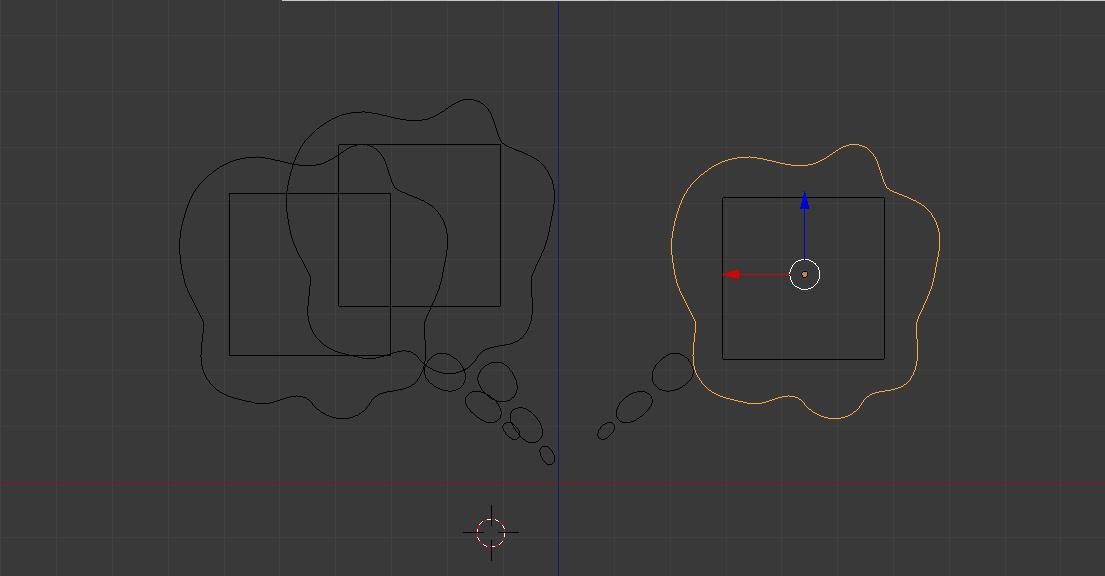
And here’s how it looks in game:
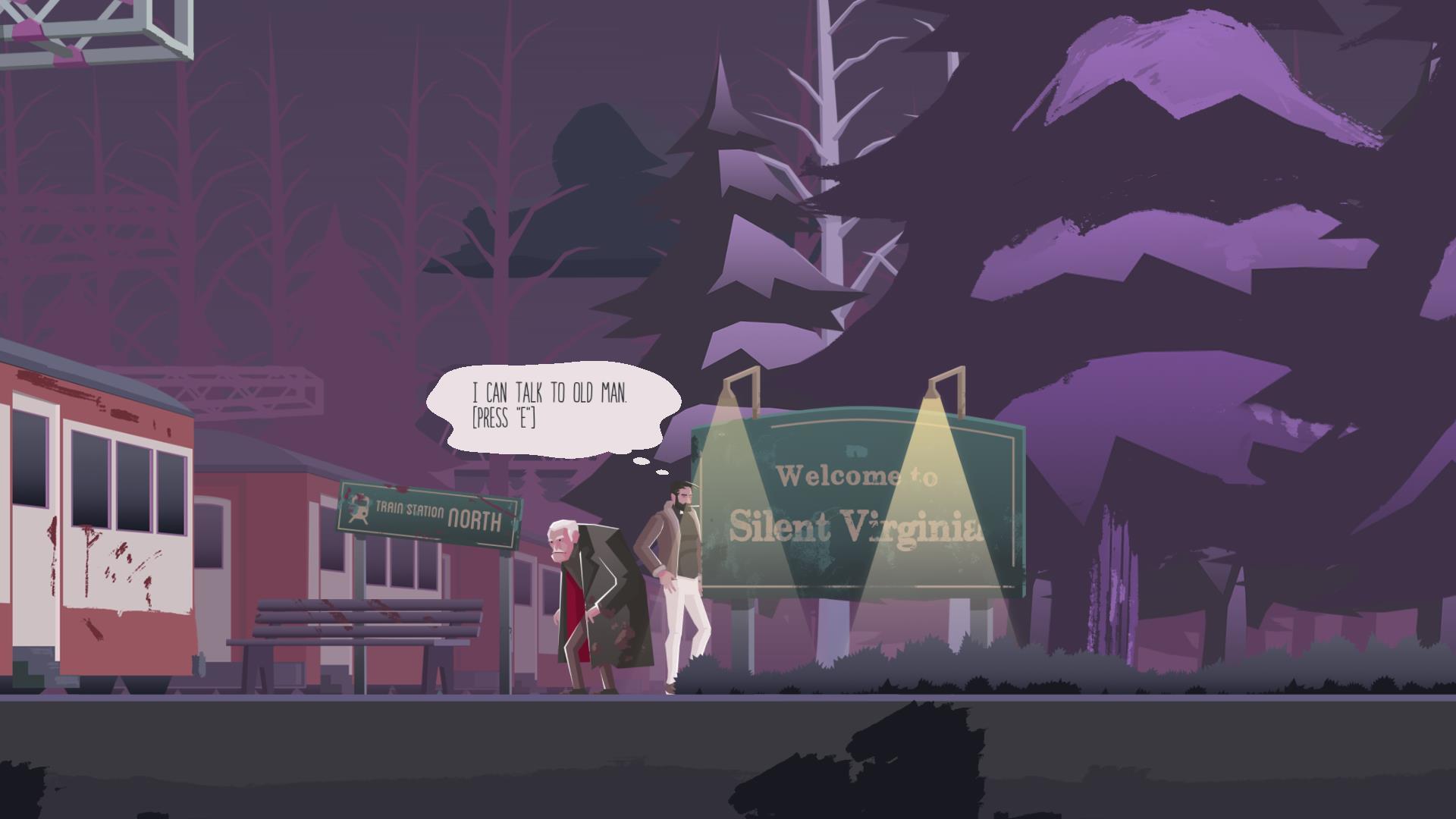
We have plans to extend the system, and use it more intensively. E.g. we have not yet used the feature "various NPCs and various phrases may have various bubble types" as intensively as we want to. We will!
If you like our “bubble science”, please add The Unholy Society to your wishlist to stay up to day with all further announcements.

We love comics, and we wanted all the conversations in the game to look like drawn straight from the visual novels. Comic books have by now developed a substantial standard language how to convey some ideas.
Bubbles of all shapes and sizes
For example, there are clearly defined ways how to differentiate between someone speaking and whispering, or just speaking with a weak voice and the narrator bubbles often have a distinct background.
We also knew that we will have some special guests speaking. This is the game where you can speak with The Devil himself, and his comic bubble should not look like a mere mortal. For this, we looked at how Neil Gaimans The Sandman uses various comic bubble types to represent various special characters (like the endless). E.g. the Dream has a special bubble that is filled with black, has a strong white outline and is wobbly. You automatically imagine that its not a normal voice speaking these words.
So, we wanted it all in our game :) To achieve this, we developed a simple system of defining comic bubble types. We have many comic bubble types, and each type may have different shape, outline, colors and font. Each NPC can have his/her special bubble type, also a particular phrase (like shout) may use a particular comic bubble type.
Heres how hero shouting may look like:

The simplest, early comic bubble type looked like this when designed in Blender:

As you can see, a bubble type has actually three bubble shapes: one to the left, one to the right, and one going to the top. We use a particular direction in game depending on various things. In the walking view the direction (usually) depends on the direction between a speaker and a listener. In the first-person view (when we fight) the direction depends on the position of speakers mouth on the screen.
Oh yeah, each NPC has a specifically configured mouth position.
Inside the bubble, we have a special area where the text must fit. We first put the text inside, wrap it, and then we adjust bubble scaling to make the best fit around the text.
The screenshot above shows a comic bubble for choice, used when a player needs to make a choice in the conversation. The three bubbles never overlap each other, this way choices are displayed correctly. This is how it looks like in game:

When a person speaks, we use a different bubble shape:

Will it blend?
We use Blenders Bezier curves to define comic bubble shape. And we make some comic bubbles animated, using Blenders shape key animation, exported to Castle Game Engine animation format.
During the game, we wanted to show hints to the player, indicating that a player can press something to interact with something (enter a house, speak to someone). We realized that this can be nicely shown as a comic bubble indicating that a hero is thinking: Hmm, I can enter this house. Comics have already established a standard how to show a thinking bubble of a person, so we can use this.
Heres how the thinking bubble looks like in Blender:

And heres how it looks in game:

We have plans to extend the system, and use it more intensively. E.g. we have not yet used the feature "various NPCs and various phrases may have various bubble types" as intensively as we want to. We will!
If you like our bubble science, please add The Unholy Society to your wishlist to stay up to day with all further announcements.
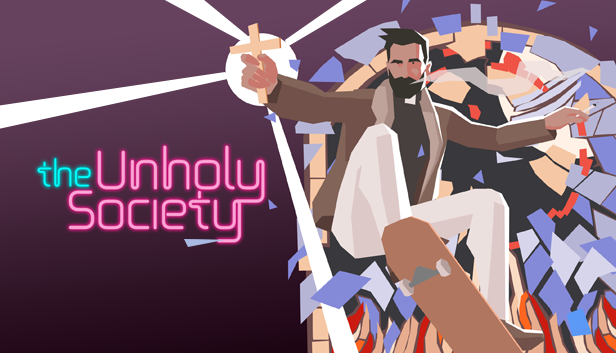
One half of our game, ]The Unholy Society, is an adventure game. You walk around, talk with people, make choices and explore the storyline. We have developed a system, a simple scripting language, to better define adventure games like ours.
Even though our “game designer” is also a programmer, he wanted to separate the game logic from the game’s core source code. This way, the logic, as in, “you cannot enter the church before you speak with aunt” is specified in a different place and a different language, than for example, the logic of how to load Spine models and animate them in the game.
So, we’ve made a script system, designed with "conversations", as a primary use-case. We call it “The Unholy Conversations”.
As the name suggests, the first use-case is for when a player talks with one or more NPCs. However, the system is also useful to define cut-scenes: NPCs can talk (with or without the player) and animations in the environment and the NPCs can be run and so on. The scripts are also run when you enter a location or a particular area of a location. When the player is inside a “sensor” (a simple rectangular box), a script decides whether the player can interact with something and what happens when (s)he does.
How it looks
It’s a set of files, named something like “
[i]aunt: Hello dear.
hero: Hello my dear auntie!
aunt: You're late.[/i]
Simple enough, right? If a line starts with “xxx:” then it’s just someone speaking. “xxx” can be the name of an NPC (it can also be empty to indicate this NPC, which is implicitly “aunt” within “aunt.conv.txt” file) or just “hero”.
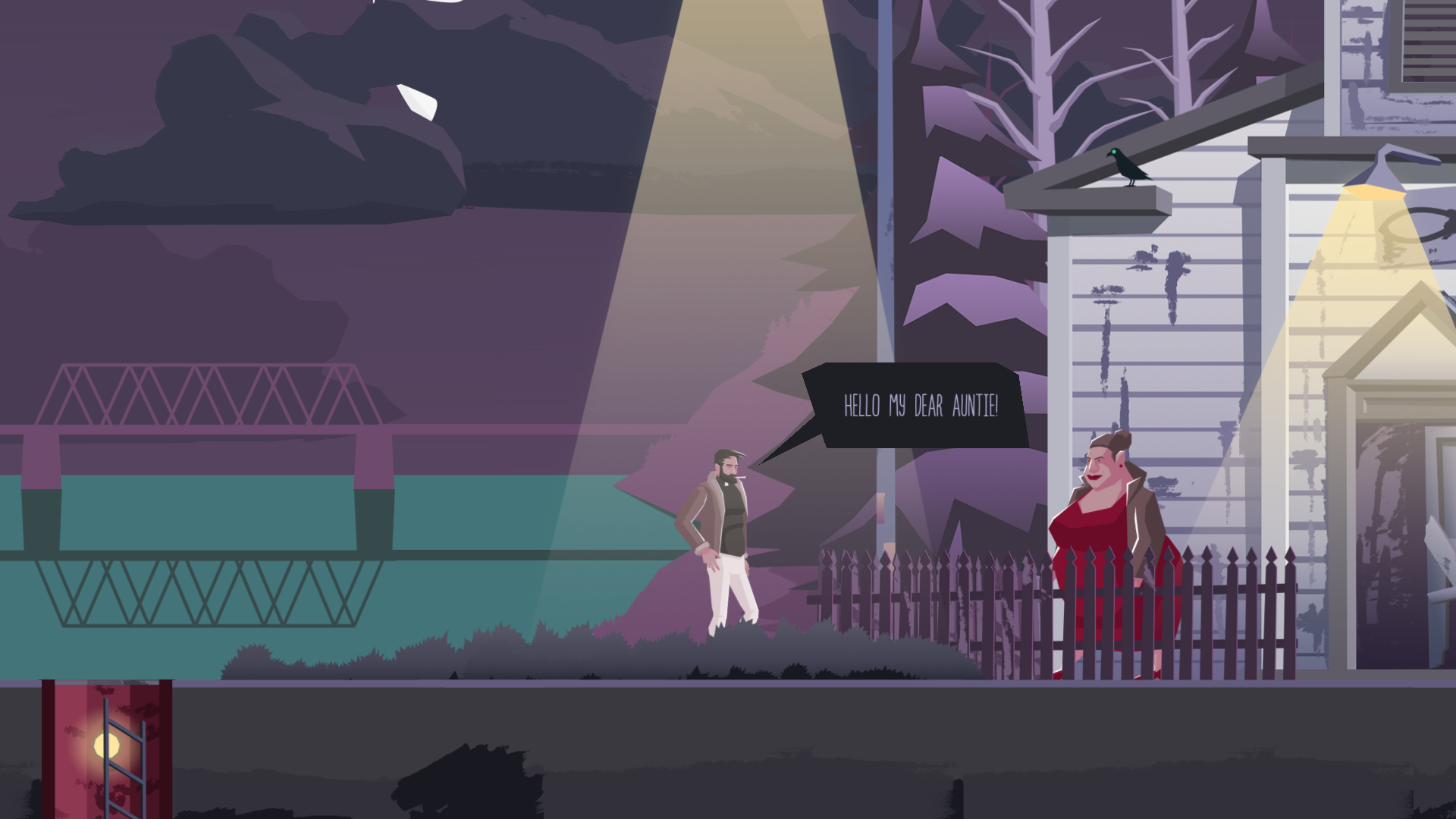
A central part of the conversation is choices. They look like this:
[i]aunt: Go to Edward.
-> Why are you so suspicious when it comes to the Vladinsky family?
aunt: I'm not sure are they a good influence on our Susan.
-> Can I talk with Susan?
aunt: She's getting dressed. There's no time for chit-chat now.
-> Bye then.
aunt: See you soon.
->[/i]
As you can see, each choice is just a line that starts with “->”. They all must have the same indentation (hi, Python lovers!) and they must end with an empty choice. This way you can have nested choices too. Note that the choices are (right now) always spoken by a hero and this is why, in the text above, we do not clarify who says, “Bye then”.
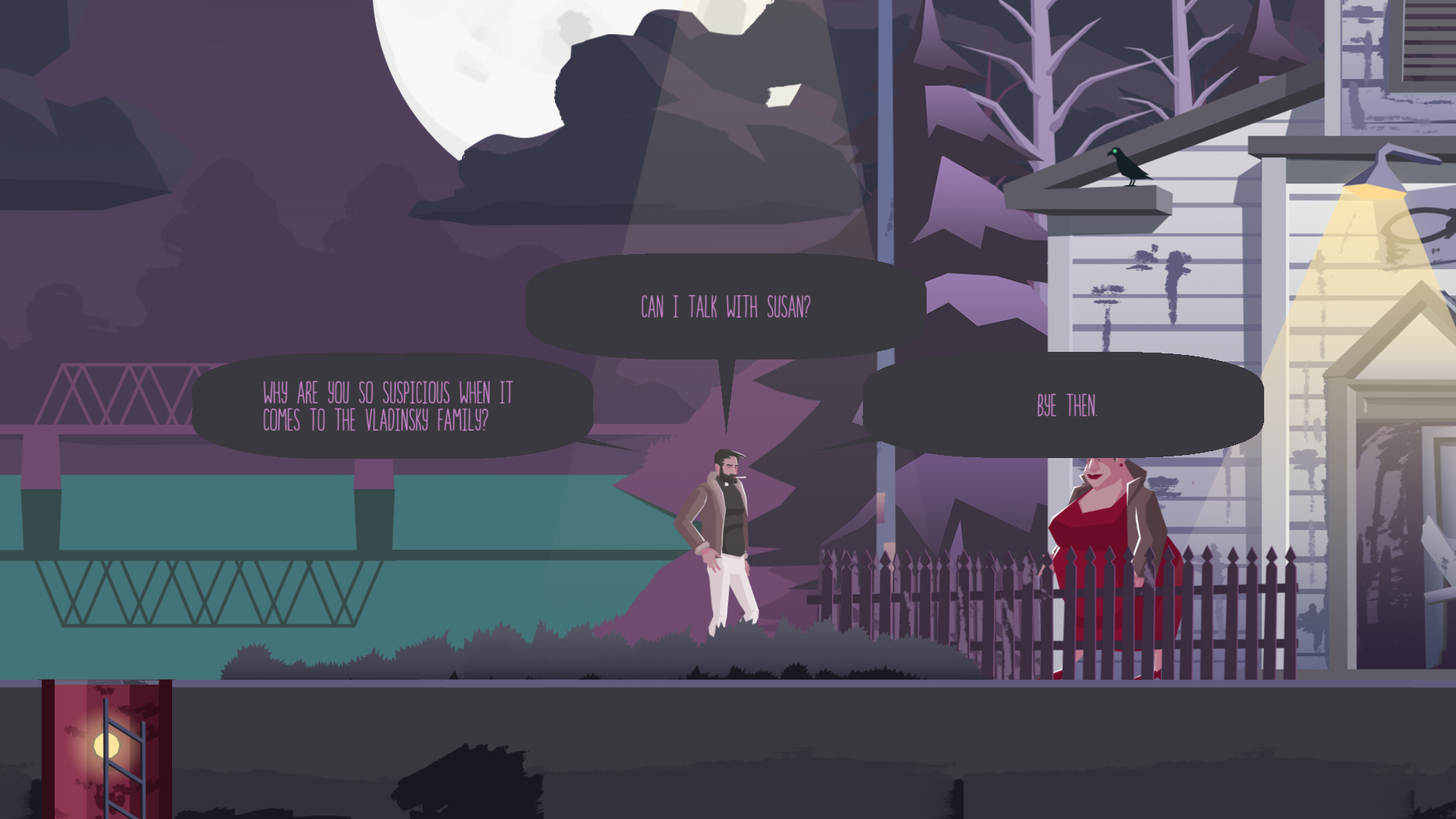
To enable simple loops within a conversation, one line may start with a label like “label start” and another line can then jump to it, like “go-label start”. This allows the creation of conversations where you can inquire with an NPC about something, like an investigation, and only exit the loop once you are satisfied (or you have exhausted all the options). The label mechanism does seem like the unpopular “goto” mechanism, abolished from most high-level programming languages, yet here it works perfectly. It’s simple (the conversation files are always short and jumps are only within a single conversation, of course) and flexible, as it allows jumps to different locations.
Variables and tests
A game logic remembers the state of the storyline.
Take for example, “Have you already spoken with aunt?”. This particular information (if you have already visited someone) is actually very often useful. All the conversations (and thus, all the NPCs and all locations) have an automatically remembered state of “visited”. It’s a simple boolean flag (it can be true or false). It is initially false and then automatically changes to true once you have spoken with someone.
You use a variable in simple boolean expressions together with the “if” instruction:
[i]if not visited
aunt: Finally! There you are!
hero: Hello my dear auntie!
aunt: You're late.
endif
aunt: Go to Edward.[/i]
Here we use the automatic variable “visited”. Like in every good programming language, variables are placed in namespaces, with each conversation being a natural namespace. This means that another NPC can say different things depending on whether you have spoken with aunt:
[i]if not aunt.visited
uncle: Your aunt is waiting for you in front of the church!
else
uncle: Go on, boy.
endif[/i]
Another automatic variable is “gate”. Some NPCs simply won’t let you through until you have done something. For instance, you cannot talk with Susan too early in the game, as you have seen in the above snippets. Once an NPC decides that you can pass, it can “change” the gate status doing “set gate false”.
Finally, every conversation can have it’s own custom variables. This can be used to store any game state. For example, the aunt could have a variable like “is_angry”. You can declare such a variable within a conversation file and use it (read or write) from this or other conversations. For instance, a conversation with aunt could end badly for you:
[i]declare is_angry false
aunt: Go to Edward.
-> Right away!
aunt: Attaboy!
-> Come on, do I really have to?
aunt: Yes, you insolent brat.
aunt: I remember when you were young and…
hero: OK, OK, I’m going…
set is_angry true
->[/i]
Now, another NPC or the aunt could use this flag: “if aunt.is_angry”.
As you can see, all the variables must be declared and the declaration must specify their initial value. In this example, the aunt is initially not angry (but watch out, you insolent brat!) That said, it’s a secure and reliable programming language. Only special “automatic” variables, like “visited” or “gate”, do not need to be declared.
Naturally, all the conversation variables are saved to the save-game. This allowed the save-game code to be quite simple: just write all the variables to the save-game.
Other cool stuff
The conversations can cause a variety of actions. They can teleport the player or an NPC. They can make some NPC or asset appear or disappear. They can play a particular animation. All of this is smartly saved to the save-game, so the game designer does not have to worry about these technical details when designing the game logic.
All the scripts are automatically validated (they use existing variables, are connected to the actual data, etc.). This makes modifying these files safe and testing is easier when the computer automatically detects some of your mistakes. Right now the testing is done each time the game loads (it takes a fraction of a second now - less than 1/10 of a second), but it may be moved to our continuous delivery process (using Jenkins) later.
Inspiration
We have designed a conversation system once before, for our not-yet-released game, The Venice. It had some good ideas and we have borrowed some of them. But it was also not comfortable enough to write a large amount of logic… what we have now, The Unholy Conversations, is both simpler and more flexible to use.
We have looked at other conversation systems as well. One in particular was from an excellent indie game, Night In The Woods, which is public and documented on https://github.com/thesecretlab/YarnSpinner/ . We have borrowed various ideas from it, e.g. that the “talk” lines should be simple to write, the “visited” state should be tracked automatically and the “if” and choices should be easy.
The “Yarn” language was, in turn, inspired by Twine, a simple text format for telling non-linear stories with choices.
Twine is also renowned for its simple-to-use graphic editor for stories, although we quickly decided that a graphic editor was not as useful as it sounds for things like our game conversations. Conversations in games need to depend on various variables and they need to be written easily. Wrapping them in a graphic editor felt unnecessarily limiting. We’re programmers, we work fast with a text editor and a clean programming language with simple syntax -- so that was our focus on The Unholy Conversations.
The Future
After the development of The Unholy Society and once we catch our breath, we plan to make this system independent from the game and release it as an open-source component. We’re huge fans of open-source here (we use our own open-source Castle Game Engine for the entire game development), so in doing so, we will give back to the community too.
If you appreciate our dedication and want to know more about the game, please add The Unholy Society to your wishlist to stay up to date with all further announcements.

One half of our game, ]The Unholy Society, is an adventure game. You walk around, talk with people, make choices and explore the storyline. We have developed a system, a simple scripting language, to better define adventure games like ours.
Even though our game designer is also a programmer, he wanted to separate the game logic from the games core source code. This way, the logic, as in, you cannot enter the church before you speak with aunt is specified in a different place and a different language, than for example, the logic of how to load Spine models and animate them in the game.
So, weve made a script system, designed with "conversations", as a primary use-case. We call it The Unholy Conversations.
As the name suggests, the first use-case is for when a player talks with one or more NPCs. However, the system is also useful to define cut-scenes: NPCs can talk (with or without the player) and animations in the environment and the NPCs can be run and so on. The scripts are also run when you enter a location or a particular area of a location. When the player is inside a sensor (a simple rectangular box), a script decides whether the player can interact with something and what happens when (s)he does.
How it looks
Its a set of files, named something like
[i]aunt: Hello dear.
hero: Hello my dear auntie!
aunt: You're late.[/i]
Simple enough, right? If a line starts with xxx: then its just someone speaking. xxx can be the name of an NPC (it can also be empty to indicate this NPC, which is implicitly aunt within aunt.conv.txt file) or just hero.

A central part of the conversation is choices. They look like this:
[i]aunt: Go to Edward.
-> Why are you so suspicious when it comes to the Vladinsky family?
aunt: I'm not sure are they a good influence on our Susan.
-> Can I talk with Susan?
aunt: She's getting dressed. There's no time for chit-chat now.
-> Bye then.
aunt: See you soon.
->[/i]
As you can see, each choice is just a line that starts with ->. They all must have the same indentation (hi, Python lovers!) and they must end with an empty choice. This way you can have nested choices too. Note that the choices are (right now) always spoken by a hero and this is why, in the text above, we do not clarify who says, Bye then.

To enable simple loops within a conversation, one line may start with a label like label start and another line can then jump to it, like go-label start. This allows the creation of conversations where you can inquire with an NPC about something, like an investigation, and only exit the loop once you are satisfied (or you have exhausted all the options). The label mechanism does seem like the unpopular goto mechanism, abolished from most high-level programming languages, yet here it works perfectly. Its simple (the conversation files are always short and jumps are only within a single conversation, of course) and flexible, as it allows jumps to different locations.
Variables and tests
A game logic remembers the state of the storyline.
Take for example, Have you already spoken with aunt?. This particular information (if you have already visited someone) is actually very often useful. All the conversations (and thus, all the NPCs and all locations) have an automatically remembered state of visited. Its a simple boolean flag (it can be true or false). It is initially false and then automatically changes to true once you have spoken with someone.
You use a variable in simple boolean expressions together with the if instruction:
[i]if not visited
aunt: Finally! There you are!
hero: Hello my dear auntie!
aunt: You're late.
endif
aunt: Go to Edward.[/i]
Here we use the automatic variable visited. Like in every good programming language, variables are placed in namespaces, with each conversation being a natural namespace. This means that another NPC can say different things depending on whether you have spoken with aunt:
[i]if not aunt.visited
uncle: Your aunt is waiting for you in front of the church!
else
uncle: Go on, boy.
endif[/i]
Another automatic variable is gate. Some NPCs simply wont let you through until you have done something. For instance, you cannot talk with Susan too early in the game, as you have seen in the above snippets. Once an NPC decides that you can pass, it can change the gate status doing set gate false.
Finally, every conversation can have its own custom variables. This can be used to store any game state. For example, the aunt could have a variable like is_angry. You can declare such a variable within a conversation file and use it (read or write) from this or other conversations. For instance, a conversation with aunt could end badly for you:
[i]declare is_angry false
aunt: Go to Edward.
-> Right away!
aunt: Attaboy!
-> Come on, do I really have to?
aunt: Yes, you insolent brat.
aunt: I remember when you were young and
hero: OK, OK, Im going
set is_angry true
->[/i]
Now, another NPC or the aunt could use this flag: if aunt.is_angry.
As you can see, all the variables must be declared and the declaration must specify their initial value. In this example, the aunt is initially not angry (but watch out, you insolent brat!) That said, its a secure and reliable programming language. Only special automatic variables, like visited or gate, do not need to be declared.
Naturally, all the conversation variables are saved to the save-game. This allowed the save-game code to be quite simple: just write all the variables to the save-game.
Other cool stuff
The conversations can cause a variety of actions. They can teleport the player or an NPC. They can make some NPC or asset appear or disappear. They can play a particular animation. All of this is smartly saved to the save-game, so the game designer does not have to worry about these technical details when designing the game logic.
All the scripts are automatically validated (they use existing variables, are connected to the actual data, etc.). This makes modifying these files safe and testing is easier when the computer automatically detects some of your mistakes. Right now the testing is done each time the game loads (it takes a fraction of a second now - less than 1/10 of a second), but it may be moved to our continuous delivery process (using Jenkins) later.
Inspiration
We have designed a conversation system once before, for our not-yet-released game, The Venice. It had some good ideas and we have borrowed some of them. But it was also not comfortable enough to write a large amount of logic what we have now, The Unholy Conversations, is both simpler and more flexible to use.
We have looked at other conversation systems as well. One in particular was from an excellent indie game, Night In The Woods, which is public and documented on https://github.com/thesecretlab/YarnSpinner/ . We have borrowed various ideas from it, e.g. that the talk lines should be simple to write, the visited state should be tracked automatically and the if and choices should be easy.
The Yarn language was, in turn, inspired by Twine, a simple text format for telling non-linear stories with choices.
Twine is also renowned for its simple-to-use graphic editor for stories, although we quickly decided that a graphic editor was not as useful as it sounds for things like our game conversations. Conversations in games need to depend on various variables and they need to be written easily. Wrapping them in a graphic editor felt unnecessarily limiting. Were programmers, we work fast with a text editor and a clean programming language with simple syntax -- so that was our focus on The Unholy Conversations.
The Future
After the development of The Unholy Society and once we catch our breath, we plan to make this system independent from the game and release it as an open-source component. Were huge fans of open-source here (we use our own open-source Castle Game Engine for the entire game development), so in doing so, we will give back to the community too.
If you appreciate our dedication and want to know more about the game, please add The Unholy Society to your wishlist to stay up to date with all further announcements.

Oh, so you wanna check out, how's the game development progressing. Sure, just sign here with your blood... ok, we'll pass the documents to the manager, and send it back to you in few days. Feel free to look around at our Society. We added a few new screenshots here and there – you probably want to check out the gallery!
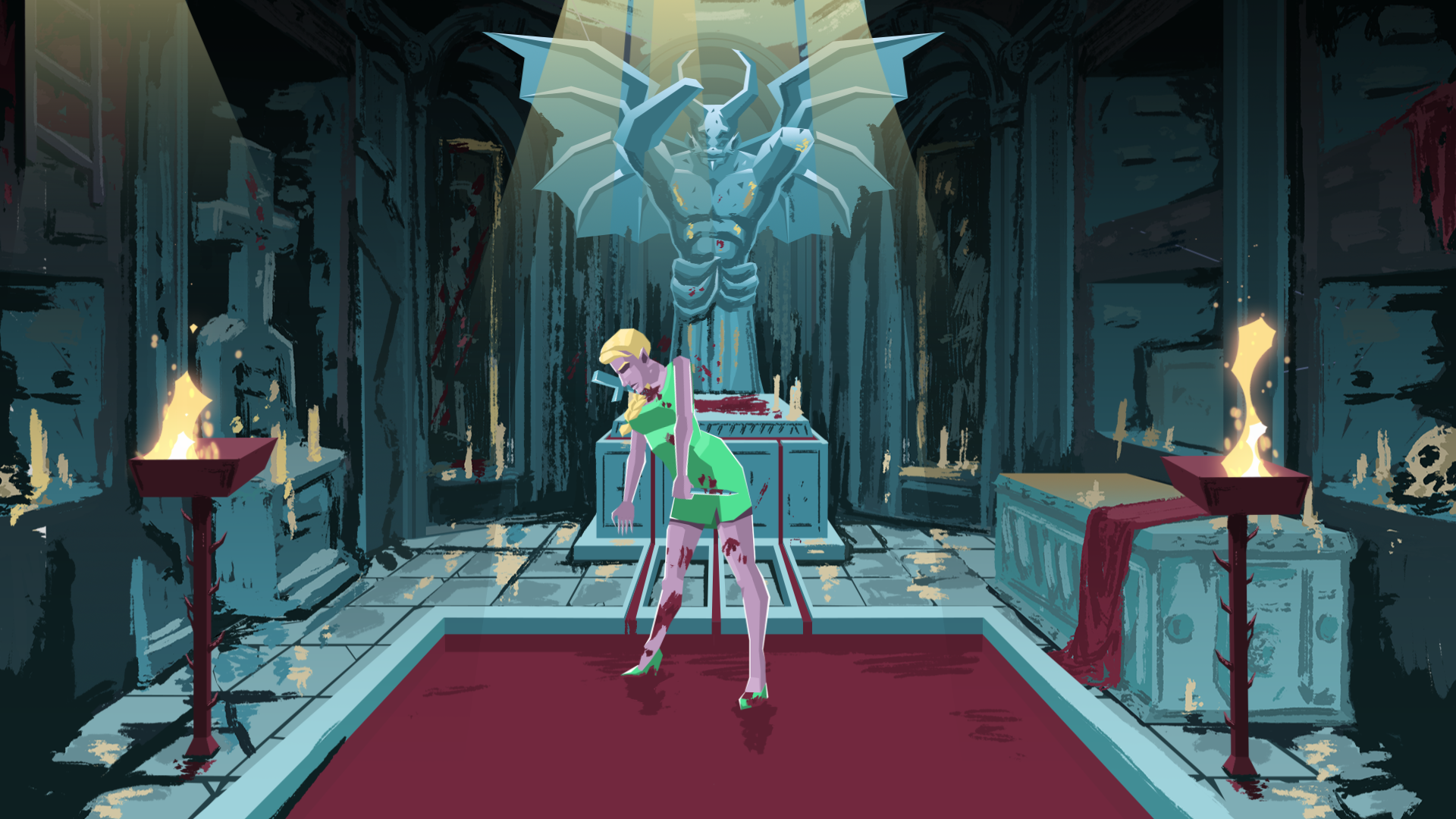
After you're done, please add The Unholy Society to your wishlist. What? You didn't read the fine print? It's the wishlist or your soul, choose wisely!

Oh, so you wanna check out, how's the game development progressing. Sure, just sign here with your blood... ok, we'll pass the documents to the manager, and send it back to you in few days. Feel free to look around at our Society. We added a few new screenshots here and there you probably want to check out the gallery!

After you're done, please add The Unholy Society to your wishlist. What? You didn't read the fine print? It's the wishlist or your soul, choose wisely!

Oh, hi! You’ve probably noticed how our amazing sense of humor just got over 9000 in terms of pop cultural references in the title of this announcement. We're 90s kids, you know? Puns make us feel young and we believe there's still a bit of a rebellious teen spirit in us too. It just smells like it.
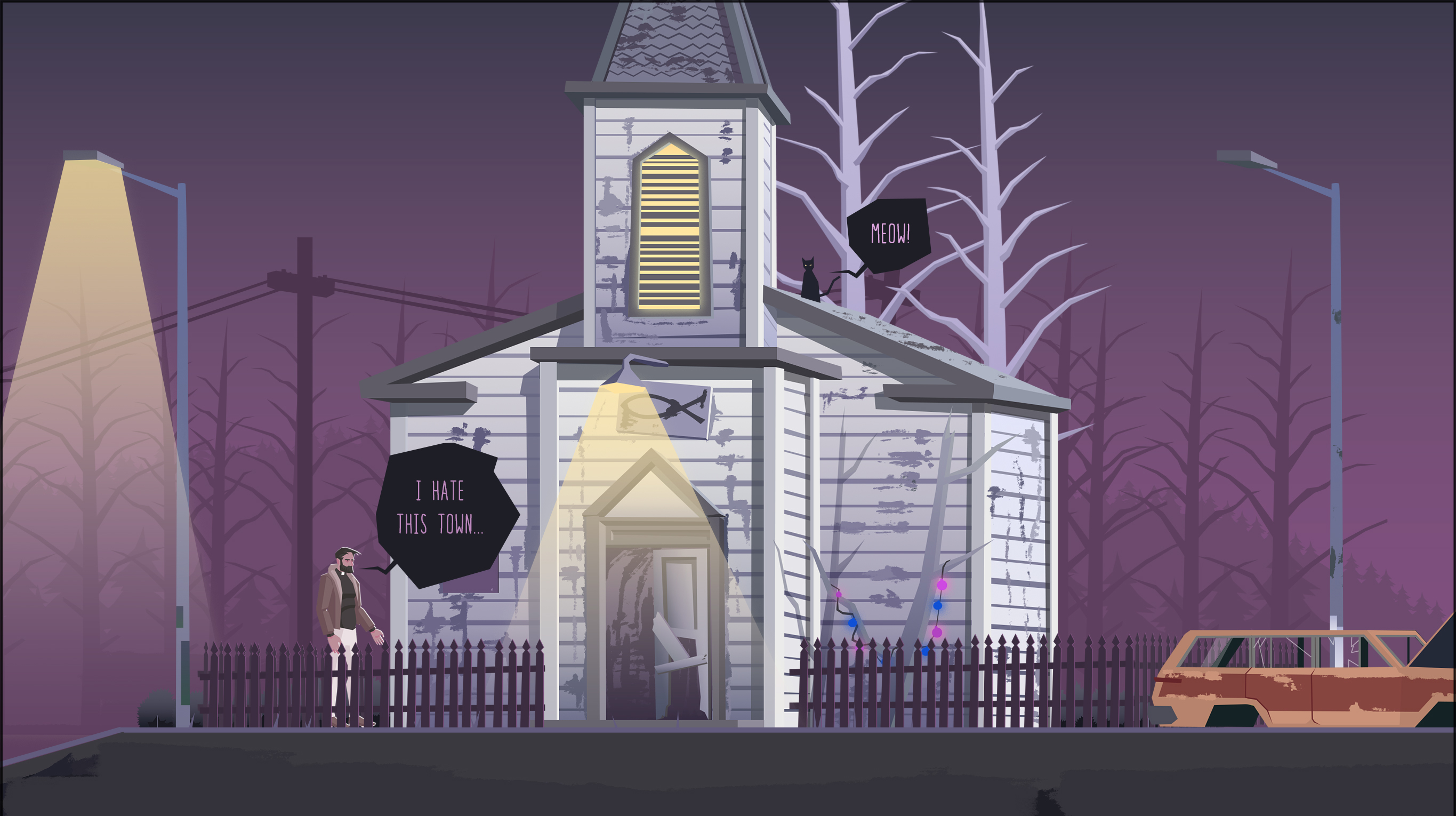
Anyway, let's talk about all of the sweet inspiration from our childhood which, as expected, are having a great impact on the creative process of The Unholy Society. Our not so heroic main character has a lot in common with Jesse Custer from The Preacher. He's tough, sassy and his life is constantly driving him into tight spots and situations with no way out. The retired exorcist is also a bit of a John Constantine-type character who, even in the face of demonic threats, doesn't loose his sarcastic humor.
We never said that we were good kids who only watched Care Bears and read Donald Duck.

Fans of classic horror movies will enjoy The Unholy Society as well. There are a lot of vampires, werewolves and other characters inspired by the scary films of the 30s and 40s. B-movie references galore! We’ve also hid some Lovecraftian lore in the artstyle and dialogues further down the storyline, so be sure to stay focused if you want to find all the quotes and nuances.
Oh, and did we mention Twilight? YES, THAT TWILIGHT.
Now, in case you're wondering, our game is not Pop-cultural References: The Video Game. We're trying to tell a fun, entertaining and original story and we’re pouring our hearts into it! It just so happens that they are partially made up of all the works of culture we love so much. That's why we feel the need to include them in our game.
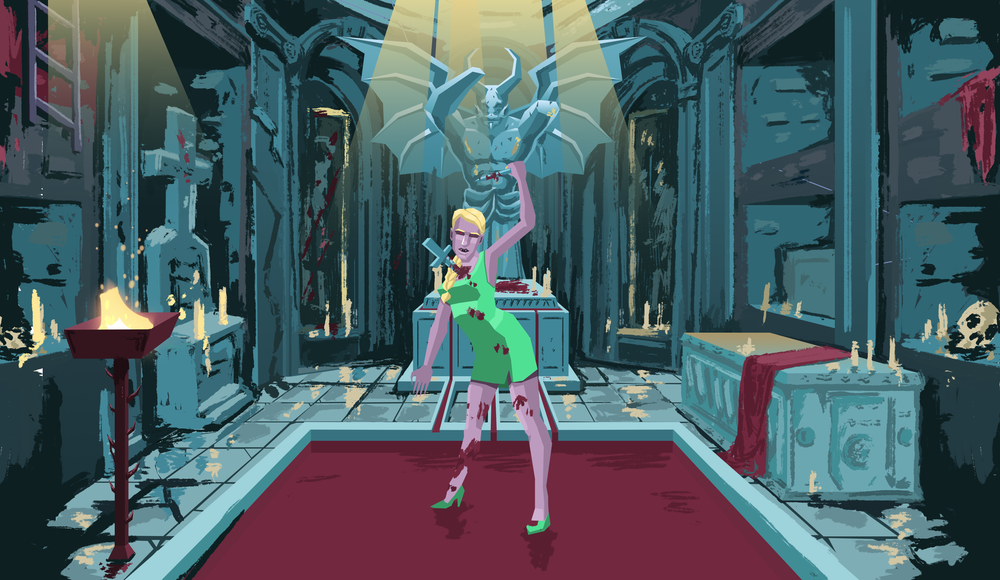
Maybe after experiencing The Unholy Society, you'll feel the desire to read Hellblazer or check out The Exorcist for the first time ever? That would really make us happy.
So, if you love comic books, horror movies and all the good stuff as much as we do, please add The Unholy Society to your wishlist!

Oh, hi! Youve probably noticed how our amazing sense of humor just got over 9000 in terms of pop cultural references in the title of this announcement. We're 90s kids, you know? Puns make us feel young and we believe there's still a bit of a rebellious teen spirit in us too. It just smells like it.

Anyway, let's talk about all of the sweet inspiration from our childhood which, as expected, are having a great impact on the creative process of The Unholy Society. Our not so heroic main character has a lot in common with Jesse Custer from The Preacher. He's tough, sassy and his life is constantly driving him into tight spots and situations with no way out. The retired exorcist is also a bit of a John Constantine-type character who, even in the face of demonic threats, doesn't loose his sarcastic humor.
We never said that we were good kids who only watched Care Bears and read Donald Duck.

Fans of classic horror movies will enjoy The Unholy Society as well. There are a lot of vampires, werewolves and other characters inspired by the scary films of the 30s and 40s. B-movie references galore! Weve also hid some Lovecraftian lore in the artstyle and dialogues further down the storyline, so be sure to stay focused if you want to find all the quotes and nuances.
Oh, and did we mention Twilight? YES, THAT TWILIGHT.
Now, in case you're wondering, our game is not Pop-cultural References: The Video Game. We're trying to tell a fun, entertaining and original story and were pouring our hearts into it! It just so happens that they are partially made up of all the works of culture we love so much. That's why we feel the need to include them in our game.

Maybe after experiencing The Unholy Society, you'll feel the desire to read Hellblazer or check out The Exorcist for the first time ever? That would really make us happy.
So, if you love comic books, horror movies and all the good stuff as much as we do, please add The Unholy Society to your wishlist!
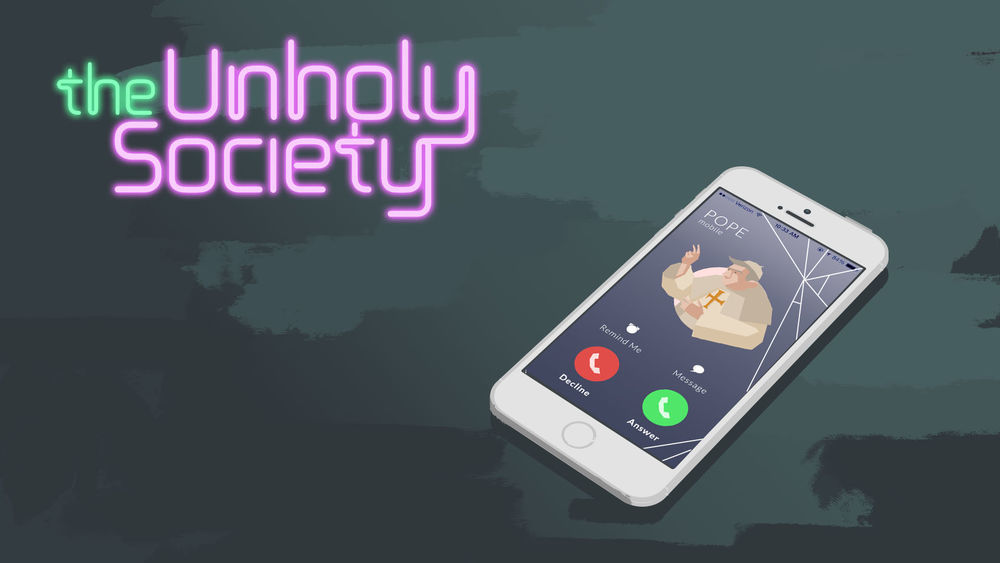
Or just a regular smartphone. It's not called the iPope, actually, but you know... you can call the Pope! Get it? I'm sorry.
Well, the thing is, even though our brave comic book-inspired exorcist has been retired for some time, when the world stands on the brink of Armageddon, he can count on the Church's help. And not just anyone's help mind you, but the one and only Pope is ready to offer him some feedback or comments on the latest developments.
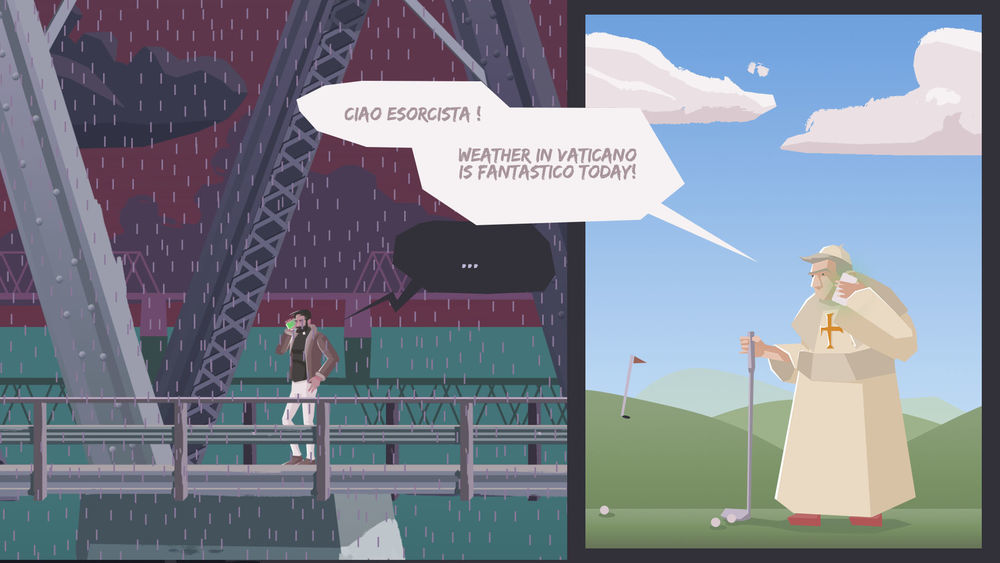
Feeling stuck? Or maybe youve forgotten some crucial info whilst fighting waves of cultists, demons or vampires? Hell, maybe you just need a bit of spiritual support? Take out your mobile phone, choose the Pope's number and immediately get back on the right track!
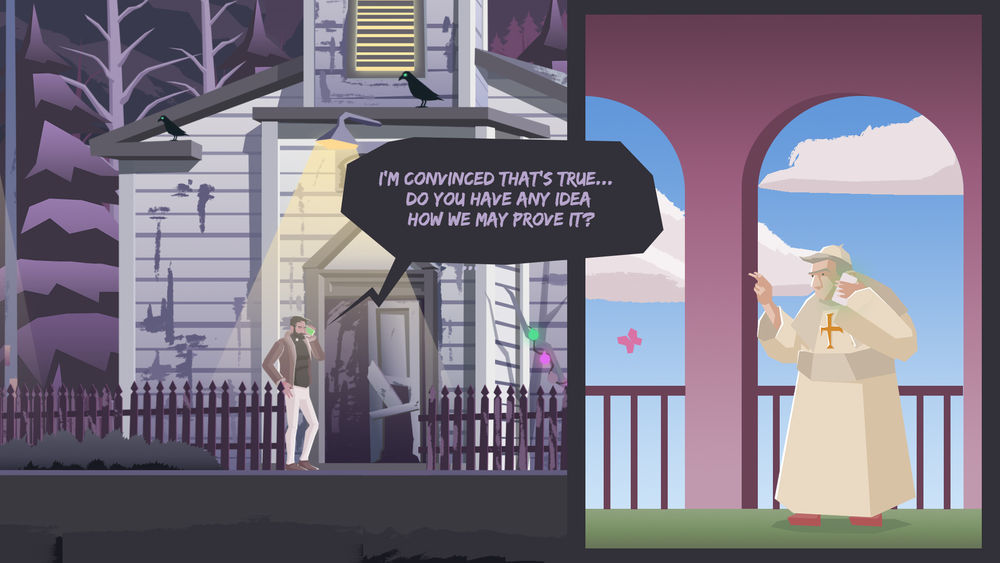
There's only one problem. Our Pope is very friendly and sometimes kinda... too clingy? You know, you don't always want to know what the weather is like in the Vatican at the moment or what he had for breakfast. So, if you don't feel like picking up the phone, just don't, like ever.
But if you really want to contact the Pope, add The Unholy Society to your wishlist and be up to date with all the announcements.

Or just a regular smartphone. It's not called the iPope, actually, but you know... you can call the Pope! Get it? I'm sorry.
Well, the thing is, even though our brave comic book-inspired exorcist has been retired for some time, when the world stands on the brink of Armageddon, he can count on the Church's help. And not just anyone's help mind you, but the one and only Pope is ready to offer him some feedback or comments on the latest developments.

Feeling stuck? Or maybe you’ve forgotten some crucial info whilst fighting waves of cultists, demons or vampires? Hell, maybe you just need a bit of spiritual support? Take out your mobile phone, choose the Pope's number and immediately get back on the right track!

There's only one problem. Our Pope is very friendly and sometimes kinda... too clingy? You know, you don't always want to know what the weather is like in the Vatican at the moment or what he had for breakfast. So, if you don't feel like picking up the phone, just don't, like… ever.
But if you really want to contact the Pope, add The Unholy Society to your wishlist and be up to date with all the announcements.

Life is lousy when you’re a preacher... erm um, an exorcist priest who must face the most iconic bad guys of the horror genre. Not only that, you’ve lost your memory and your skills. Jesus! Fortunately, you have your trusty dusty Bible, a sharp wooden stake, a revolver and the phone number to the pope, who will do everything for you.
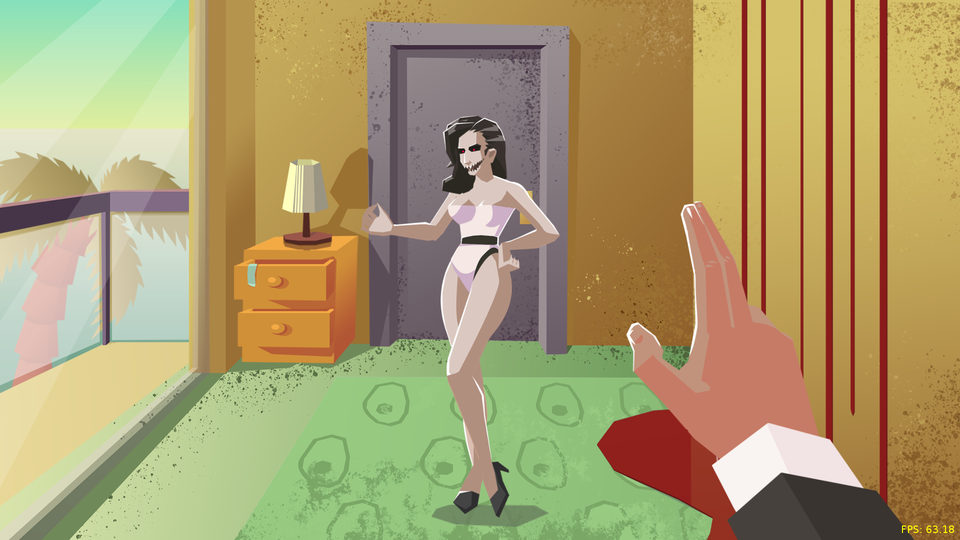
Fat Dog Games and CATastrophe Games would like to present a game that is reminiscent of your favorite horror movies, books and games, and it’s hilarious. The reality in which the Werewolf King, the Great Old One, Satan and Sadako from The Ring establish a joint anti-world club, cannot be serious.
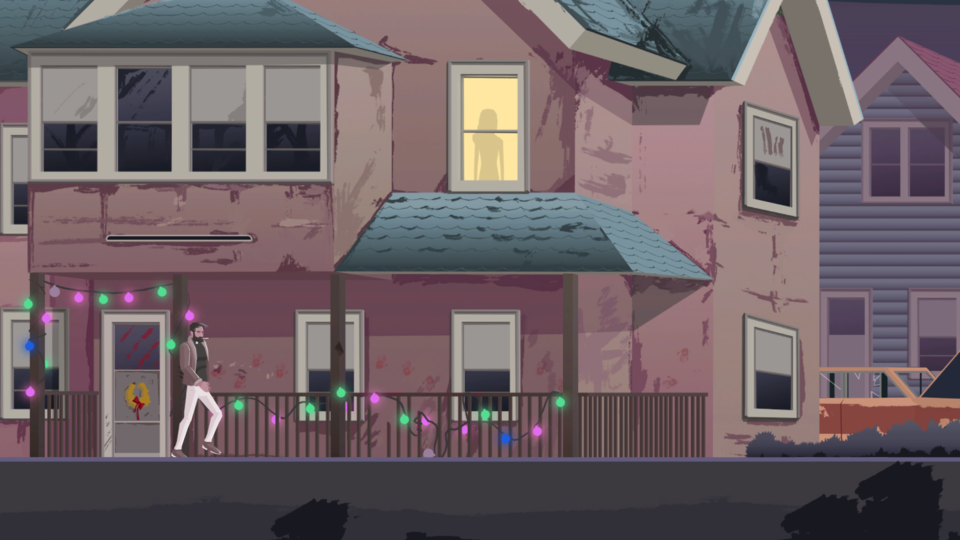
The retired exorcist will undertake a mission to save the world, which will lead to witty dialogues, funny plot twists and an interesting mix of turn-based and arcade fighting. The bitter priest will soon join the pantheon of antiheroes playing with hellfire – walking the same paths of the protagonists of the comic books Preacher and Hellblazer.
The Unholy Society will be released in Q2 of 2018. You can already add it to your Steam wishlist.

Life is lousy when youre a preacher... erm um, an exorcist priest who must face the most iconic bad guys of the horror genre. Not only that, youve lost your memory and your skills. Jesus! Fortunately, you have your trusty dusty Bible, a sharp wooden stake, a revolver and the phone number to the pope, who will do everything for you.

Fat Dog Games and CATastrophe Games would like to present a game that is reminiscent of your favorite horror movies, books and games, and its hilarious. The reality in which the Werewolf King, the Great Old One, Satan and Sadako from The Ring establish a joint anti-world club, cannot be serious.

The retired exorcist will undertake a mission to save the world, which will lead to witty dialogues, funny plot twists and an interesting mix of turn-based and arcade fighting. The bitter priest will soon join the pantheon of antiheroes playing with hellfire walking the same paths of the protagonists of the comic books Preacher and Hellblazer.
The Unholy Society will be released in Q2 of 2018. You can already add it to your Steam wishlist.
Minimum Setup
- OS: Ubuntu 16.04 LTS
- Processor: 1.5 GHzMemory: 2 GB RAM
- Memory: 2 GB RAM
- Graphics: any GPU card with 3D acceleration and latest drivers
- Storage: 1500 MB available space
Recommended Setup
- OS: Ubuntu 16.04 LTS
- Processor: 1.5 GHzMemory: 4 GB RAM
- Graphics: NVidia or AMD GPU with 1 GB VRAM
- Storage: 1500 MB available space
[ 6488 ]
[ 2268 ]
[ 1913 ]

